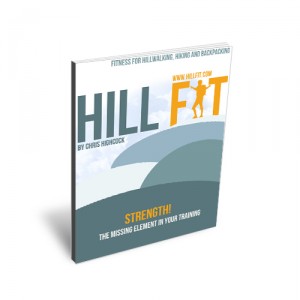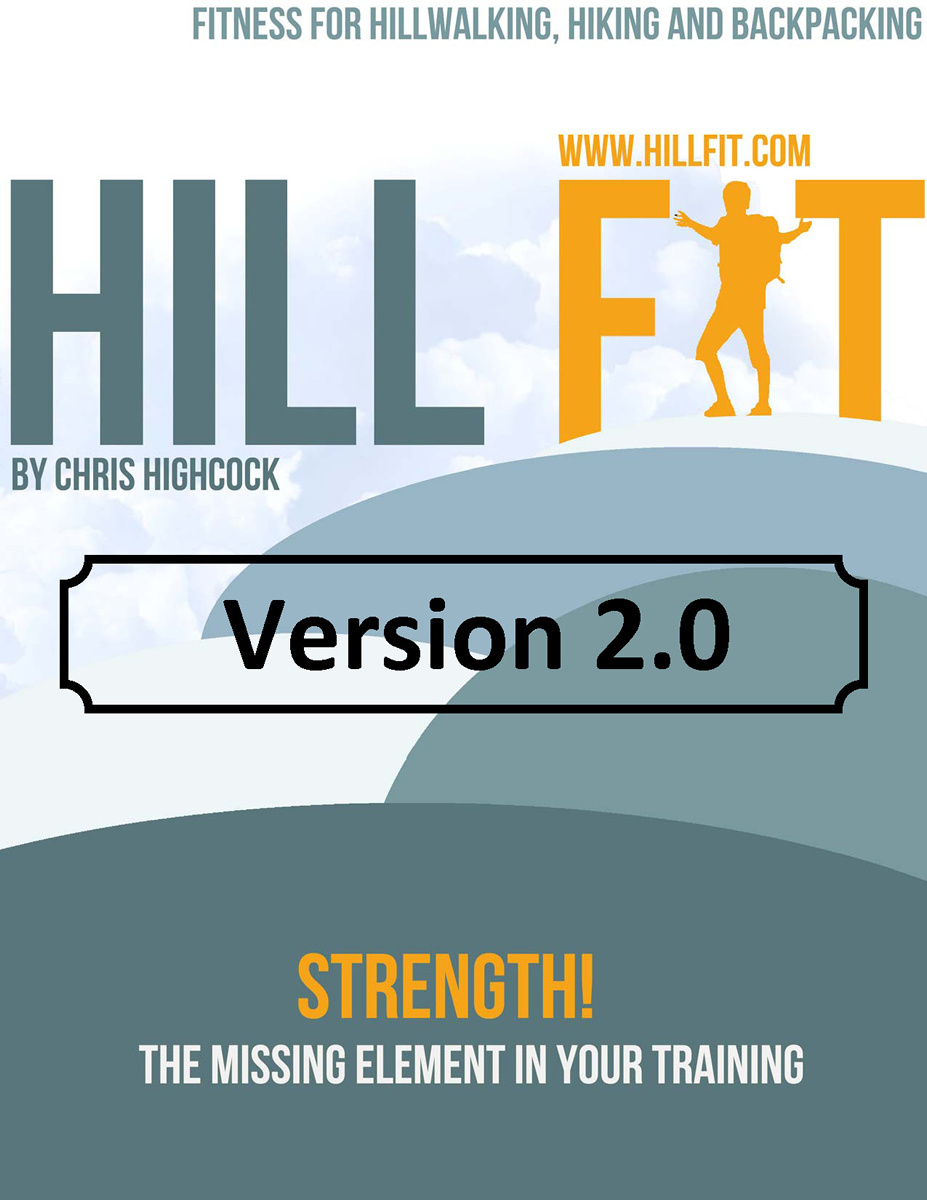A Candid Discussion About Fitness for Hiking, Backpacking, and Hillwalking With One of the Most Down-to-Earth Fitness Authors on the Net
hint: there is some good stuff in this interview for non-hikers, too!
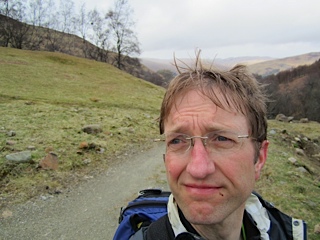
Today, I’d like to introduce you to Chris Highcock, whose work I’ve followed for several years now. Chris is a fitness guy through-and-through, but he’s also an author, blogger, and health and fitness researcher who has a knack for providing clarity to the latest research and trending topics.
I’ve always appreciated Chris’s work because he has a way of bringing the many extreme viewpoints that circulate the internet into a more balanced perspective – a rare and valuable skill to have in the health and fitness community. In fact, Chris’s Conditioning Research site was near the top of my list of best bloggers to watch in 2010, and if I had a 2013 list, his site would be right up there, too.
Needless to say, Chris has an invaluable perspective that most in the fitness industry don’t, which is exactly why I wanted to introduce you to him here. Today’s agenda involves a discussion mostly about health, fitness, and strength training as they relate to hiking, backpacking, and hillwalking, which as you’ll soon find out, are topics that are near and dear to Chris’s heart. But there’s a lot more here than meets the eye, and I’d dare say, that practically everyone who reads this will come away with at least one golden nugget that they can put into practice. Oh, and you’ll learn why wearing a kilt may help you improve your workout performance.
So, let’s dive right in.
Can you tell us a little bit about yourself – where you’re from, what you do, and how you got into fitness and hiking?
John, thanks for the opportunity to do this interview with you – I’ve been a reader and admirer of your blog and videos for a long time and it is a pleasure to be able to contribute to it.
In the real world I work in local government in Scotland, responsible for organizing elections in Edinburgh. My passion though is for the outdoors and particularly the mountains of Scotland.
I started training with weights as an unfit and overweight 15 year old. 30 years later I am still training although my focus now is not so much on “bodybuilding”, which was my main concern in my early 20’s, but on health, longevity and the physical capacity to enjoy the outdoors. As I get older I want to maintain muscle and function.
Originally from the north of England, I’ve lived in Scotland for the last 20 years and its mountains are a lot of what has kept me in this country. There is still wilderness here yet it is still within reach. I can be up a mountain immersed in nature in the afternoon yet still back in the city to see a concert or enjoy a nice meal in the evening.
I’ve always enjoyed the mountains, first in England and the north of Wales and then in Scotland. The outdoors, green space, wilderness regenerates me and lifts me above the stresses and pressures of the rest of life.
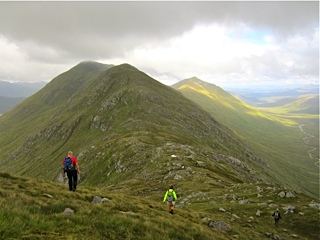 Why do you guys call it hillwalking? Why not mountainwalking, or path walking, or perhaps just hiking? I have my theories (e.g. it’s the Scotch).
Why do you guys call it hillwalking? Why not mountainwalking, or path walking, or perhaps just hiking? I have my theories (e.g. it’s the Scotch).
That makes me smile. I think “hillwalking” is used for a few reasons. Talking of hills, not mountains perhaps reflects something of a British understatement. It is self-deprecating. We also do not have any huge mountains – the highest is only 1344m – they can be serious walks in challenging weather, but most of our hills can be walked in a few hours.
Hiking sounds a little “earnest”. There is also a British game of “bagging” hills. There are a few lists of hills and hillwalkers here set themselves a challenge of climbing all of the hills on a list – getting then in the bag! For example there are 282 Munros – mountains in Scotland over 3000ft and lots of us make it a mission to tick all of them off the list! That is what we call munro-bagging.
Hillwalking? It is about hills – not mountains – and it is not just hiking – the aim is to bag a hill!
What is HillFit?
Hillfit is a term that gets used a bit in the “hillwalking” community here to express the idea of being fit for the hill.
I’ve taken that term and used it to capture something more. Hillfit is an approach that draws on a lot of my experience of both hillwalking and the fitness world. I wrote a small booklet called “Hillfit” to communicate that approach – the basic idea that getting stronger, through simple and safe exercises, can enhance your time in the outdoors. Every step becomes easier and safer. You become more resilient. Ultimately, which is most important, you will enjoy it more. It is all about fun in the end and a walk in the hills is more fun when you are fit, when you are not struggling for breath!
That booklet was well received and a lot of people benefited from it. I’ve recently released Hillfit v2.0 which maintains the simple approach, but includes some contributions from other writers, expanding on the key themes in the approach.
Why did you create HillFit? What were you trying to accomplish?
It is maybe worth repeating what I have called a manifesto on the Hillfit site:
Hillfit: Strength is not about selling you a book. It is about an approach to improve your time in the outdoors, making it safer, easier and more fun.
Getting stronger is the most important thing you can do for your fitness as a hillwalker / hiker / backpacker. Hillfit:Strength explains why and shows you how to get stronger with a set of exercises that are simple and safe.
- Simple – There is no need for a gym or any equipment. The exercises are easy to learn, gross body movements. It might only take 15 minutes a week
- Safe – exercises are selected to minimise risk and keep the body in natural positions. The last thing you want is for your training to injure you. It is no use doing “functional” exercise if you cannot function afterwards.
Hillfit: Strength is a plea for those who enjoy the outdoors to invest a little time in this simple set of exercises and to get stronger. It will transform your experience in the wilderness and improve your health.
So often when people think about getting fitter the idea is to go jogging or spend time on an exercise bike. I think that we need to reframe this so that exercise is primarily seen in terms of getting stronger! People are missing out on one of the simplest things they can do to improve their experience of the outdoors. Simply get a bit stronger!
What is the number one thing the hillwalking community needs to know about fitness?
I want to start from somewhere else. What can you do to make hillwalking more enjoyable? Too often hikers get obsessed with equipment – spending money on the latest lightweight packs, clothing or equipment. Getting fitter, getting stronger costs nothing, but when you are fitter everything suddenly becomes more fun. Each hill will take less effort and generate less stress. You can focus on the scenery that you are moving through, letting the green space rejuvenate you. Fitness is free but can make time in the outdoors so much more rewarding!
All these benefits can some with some basic exercises and simple daily habits.
What unique benefits does strength training offer the hiking, backpacking, and outdoor recreation community as a whole?
In the book I list a whole series of benefits that the hiking community could reap from some basic strength training. Stronger muscles mean:
- Better posture
- A more efficient gait
- A more robust, injury resistant body
- Better endurance
- Better balance
- A healthier metablic rate.
You won’t get those things – or at least you will not get them as quickly or safely – with “cardio” exercise. Only strength training can deliver such a full range of positive effects.
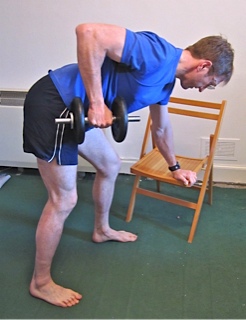 What kind of exercises do you think most hillwalkers would benefit from including in their fitness program?
What kind of exercises do you think most hillwalkers would benefit from including in their fitness program?
I want exercises that are low in skill so that you will not need to spend months mastering a complex movement pattern and I also want exercises that will be safe and not expose you to an excessive risk of injury. If possible I also want to pick exercises that are accessible in that you do not need fancy equipment.
That being said I think hillwalkers could generally benefit from strengthening their legs/hips and their upper body.
As a very simple intervention I would suggest what I’ve called the Hillfit Minimum: work up to holding a 60 second wall sit and a 50 second pushup plank. The wall sit will work the thighs, glutes and hips. The plank addresses just about everything but also targets the upper body and “core”.
I’d also encourage people to pay attention to balance. Stronger muscles will make balance better, but it is also a skill that can be developed: simply spend more time stood on one leg.
What makes the HillFit strength training program unique from other strength training programs, and why would someone choose this one as opposed to something else?
Hillfit is nothing unique – lots of approaches to strength training will work. What I have tried to emphasise though is the value of simple exercises – that require limited skill – and that focus on safety – so that the potential for injury is minimised – and that are accessible so that you can do the routine at home with minimal equipment.
Safety, low skill and accessibility are the fundamental elements. No one should be scared of exercise because it is hard to learn, it hurts or requires special equipment. It is too important for that!
Is it true that wearing a kilt makes wall sits infinitely more bearable or is that just an Internet rumor?
You know – I’ve never actually worn a kilt! Although I live in Scotland and love the country I am actually English. While I know English guys that have worn kilts at weddings I’ve never done so.
Let’s go with this though….the wall sit is a favourite move – simple to learn, no equipment required and it places the thighs in a congruent position – they are at their strongest at this point. The kilt of course adds ventilation to the groin which is a major advantage ;-)
I think a lot of people associate climbing a mountain as something that is extremely physically demanding – an experienced fraught with profuse sweating, burning legs, and heaving lungs – but you argue that it doesn’t have to be. Care to elaborate?
Sweating, heaving lungs and burning muscles are artifacts of a body that is not prepared for what you are doing. Weak and poorly conditioned muscles and the systems that support them will mean that walking will always be a struggle. As you become stronger and effect changes in your muscles and even within your muscle cells, you will not suffer as much. You will gain capacity and slowly walking even up steep hills will become more pleasurable.
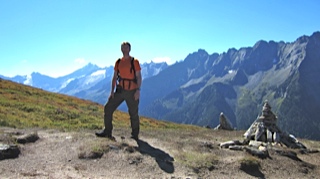
I hate the fact that something that should be a source of intense pleasure – time in the outdoors – becomes a cause of pain and discomfort. When our bodies are unable to use moderate exercise in the mountains to deliver pleasure then something is far wrong. It should be a signal that we need to address something fundamental. With improved strength and honed skill walking should be something natural, which rejuvenates and recreates us as we bask in the simple fact of being in nature. If we cannot simply walk then we seriously need to wake up and return to what should be our default state.
You talk about walking as a skill that requires practice and refinement. Could you explain why that is, and the value of this unique perspective?
We do not appreciate the complex, exquisite and wondrous choreography that we practice with each step. Walking is taken for granted, yet with each step we are moving our body through space utilizing a series of complex movements, destroying our balance and then restoring it. Nerves and sensors throughout our body sense our position in space and manage our movements.
An efficient style of walking will take less energy for each step so that you will be able to keep going for longer. A good graceful gait will also be safer, keeping the pressures of walking absorbed by the appropriate structures. Simply walking with a more efficient, skilled gait will make your walking easier and more enjoyable.
If we were learning golf or tennis we would think nothing about studying technique and honing our skill in the swing or serve with coaching and endless practice. Yet the complex skill of walking is ignored.
With this approach to walking, shoes necessarily become important. They need to be minimal so that you can truly sense the world through your feet and achieve a better gait, fully utilizing all of the data available to your soles. Philip Beach calls shoes sensory deprivation chambers!
Hillfit v2.0 has a chapter from Steven Sashen who makes and sells minimal sandals for running and walking, where he looks in detail about how to walk with some very simple cues.
One of the major aspects that struck me about HillFit is its utter simplicity. You mean to tell me that we don’t need highly complex, time-consuming training systems to enjoy our time in the great outdoors? Why is that?
Getting stronger should not be complicated. There is however an industry out there trying to convince you that you need some special equipment, coaching or routine. The fact is that simple progressive exercise will initiate the processes that will make your muscle stronger. That strength will translate into more fun in the mountains. We need to challenge and strengthen the key muscles and structures that let us push, pull, bend, hinge, squat and walk. That can be done with no special equipment, using some very simple and safe movements in a couple of short sessions each week.
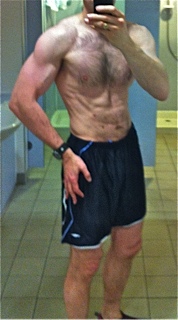 One of the themes in HillFit is that health is to be prioritized above performance and even above fitness. What is the rationale behind this?
One of the themes in HillFit is that health is to be prioritized above performance and even above fitness. What is the rationale behind this?
Health is an interesting concept. Fitness is specific – it looks at how suited you are to do particular things. You can be fit for something without being healthy. Health is a more holistic concept with all other your body’s systems working optimally. To me it would also include social, spiritual and emotional elements.
Fitness can contribute to health, but it can also detract. Exercise can injure and it can be a source of excess stress. The focus must be to train so that you support your health. Fitness should allow you to do things that promote your health – to me a fundamental is time in the outdoors. We need a perspective, to train for life and function not solely for appearance or competition.
I think we can both agree that strength training is extremely beneficial, perhaps even necessary, for the improvement and maintenance of health, fitness, and performance. But what are some of the other often-ignored and/or neglected areas that people should be paying attention to as well?
Strength to me is the basic foundation. I am not talking about powerlifting, bodybuilding strength but the maintenance of function, having the capacity to live life. Laying down muscle and staying strong is equivalent to putting money in your pension. You are providing for your future. As you get older and watch your parents or contemporaries decline you come to appreciate the importance of maintaining function – not outstanding athletic abilities but simple capacities: walking, squatting, sitting, crawling, lifting.
The two simple things I think most of us neglect in addition to this are posture and sleep. A proper posture keeps the body in its most efficient structure, directing the forces and pressures of movement through its most appropriate structures. Sleep ss simply magical and few of us get enough.
OK. William Wallace versus Edward Longshanks in a gentleman’s boxing match. Who would win?
While I’ve lived in Scotland for 20 years I am an Englishman and do not want to incriminate myself with a pronouncement on this one! However I would note that nothing in history is as clear as we might like and I tend to think that most of these characters were a bit flawed in their way.
Well, it is a gentleman’s boxing match, but fair enough. What is something you wish you knew about training when you were younger and just getting started?
I will sound like an old man now, but it is the importance of patience and realistic expectations. For so many years I have been subject to and gullible for the promises of the new secret diet or training approach that will deliver the longed for muscle, or performance.
At 45, I now realise that patience, consistency and moderation are key. So much of health and fitness comes back to advice that your mother or grandmother probably gave you: stand up straight, get to bed early, look on the positives, get some fresh air, wear sensible shoes, eat your greens….. Of course there is not much glamour in such ideas!
I wish I would have modified my expectations and settled for simple persistence and patience. These habits have kept me fit, lean and active while many contemporaries have fallen aside.
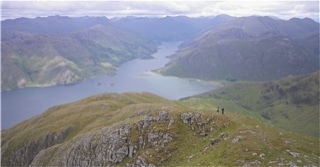 Who were some of your biggest influences in the development of HillFit, and what are the main lessons you’ve drawn from each of them?
Who were some of your biggest influences in the development of HillFit, and what are the main lessons you’ve drawn from each of them?
There are many influences on my ideas in Hillfit, many of which I can not even differentiate. I’ve been reading about fitness for 30 years and have been exposed to so much in that time and especially in the years since the birth of the internet.
However, there are some key thinkers that either directly or indirectly have shaped my ideas.
Bill DeSimone made me think very clearly about the importance of picking safe exercises, clearly explaining how to design and modify movements to keep the body in safe positions. Exercise is of no use at all if it injures you. As the old medical motto states first do no harm / Primum non nocere!
Tim Anderson with his writings stressing the importance of natural movement patterns and the impact of physical movement on the architecture of the brain has opened my mind to the importance simply of moving: crawling, walking, rolling. Many of his ideas are related to Feldenkrais and link to another important influence, Todd Hargrove.
Dr. Nicholas Romanov has written a lot about his POSE method of running, but the principles behind that of efficient movement and simple footwear have implications for walking as well. He has influenced the barefoot running movement, but is not that recognised.
While it is not the only way to develop strength – and probably not the best way to develop optimal muscle mass – High Intensity Training (HIT) as popularized by Arthur Smith and written about most recently by Doug McGuff and John Little is a very efficient approach to developing strength, stressing that brief simple and short workouts can deliver major benefits to strength and fitness.
OK, give it to me straight. What can this program do for people, and what is it primarily meant to be used for? In other words, how will someone benefit from using HillFit?
I don’t want to oversell this – I am not offering magic. There are no secrets, no philosopher’s stone of fitness. It will take some consistent work and patience, but adding strength to any body will bring a host of benefits, especially to a hillwalker/hiker. Being stronger gives you more endurance – Pavel recently remarked that “Strongman Earle Liederman observed back in 1925: “…what is endurance except continued strength?” We build endurance, mobility, and other qualities on an only solid foundation—strength”. Strength will make you more resilient and resistant to injury. It will improve your posture and gait.
There is more to the book than strength training however – v2.0 looks at issues such as the skill of walking – using a more efficient and safe gait – and at ways of maintaining mobility and balance.
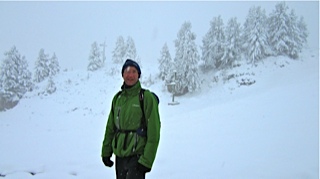
Who is HillFit best-suited for? If you could paint a word picture, what kind of person would be interested in buying this?
My desire for Hillfit is to give someone a gift of taking more pleasure from the outdoors. There are lots of people that struggle in their hikes such that rather than being a source of re-creation and recharge they become a source of stress. When people struggle for breath as they climb a steep hill, when their joints ache because their muscles are not strong enough to maintain a stable posture, when they no longer go walking with friends because they are afraid of holding them back then they are the people I want to help.
Hillfit is aimed at taking such people and with a few simple, accessible exercises and habits making walking fun again and restoring its function to recharge you emotionally, socially and even spiritually. Anyone can get a bit stronger and that bit of strength can make everything easier, safer and more enjoyable.
Where is the best place for my readers to learn more about you and your work?
There are a number of ways, although I would stress that I do not want to present myself as any sort of guru. I’d urge people to think for themselves. There are no magic bullets and no real hidden knowledge out there. Consistency, patience, moderation and realistic expectations need to be stressed.
In terms of my interest in health and fitness, for the past few years I’ve posted interesting things that I find on a blog: Conditioning Research. It is more a record of things that I find that I want to bookmark – my ideas have evolved a bit over the years.
My walks in the Scottish hills (mountains :)) are recorded on another blog Cairn in the Mist. A cairn is the pile of stones that marks the top of most hills in Scotland…and with our weather most of the time they are in the mist!
There is also a group on Facebook that was started to support the readers of Hillfit, but anyone is welcome to join.
And of course the book Hillfit is available via its sales site at www.hillfit.com.
Thanks, Chris!
Thank you John and thanks for the opportunity of sharing on your blog, a resource that I value very highly. It is an honour to be featured.
If you found this article helpful, please share it with your friends:
.jpg)
![]()
CST Coach, CST-KS
Health-First Fitness Coach
P.S. If you liked this post, then please signup for the newsletter, or follow me on Facebook or Twitter for daily updates and other interesting info.
